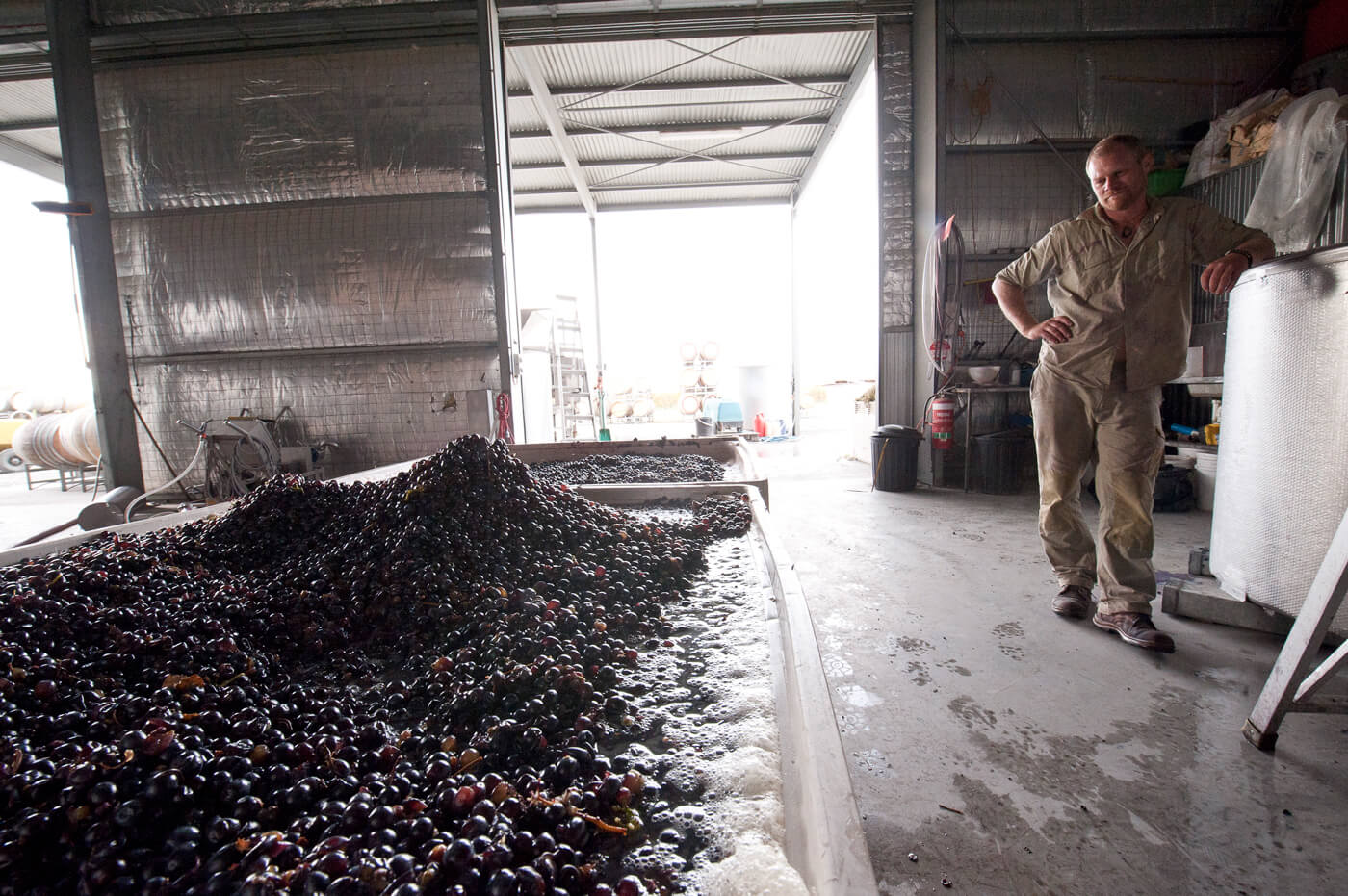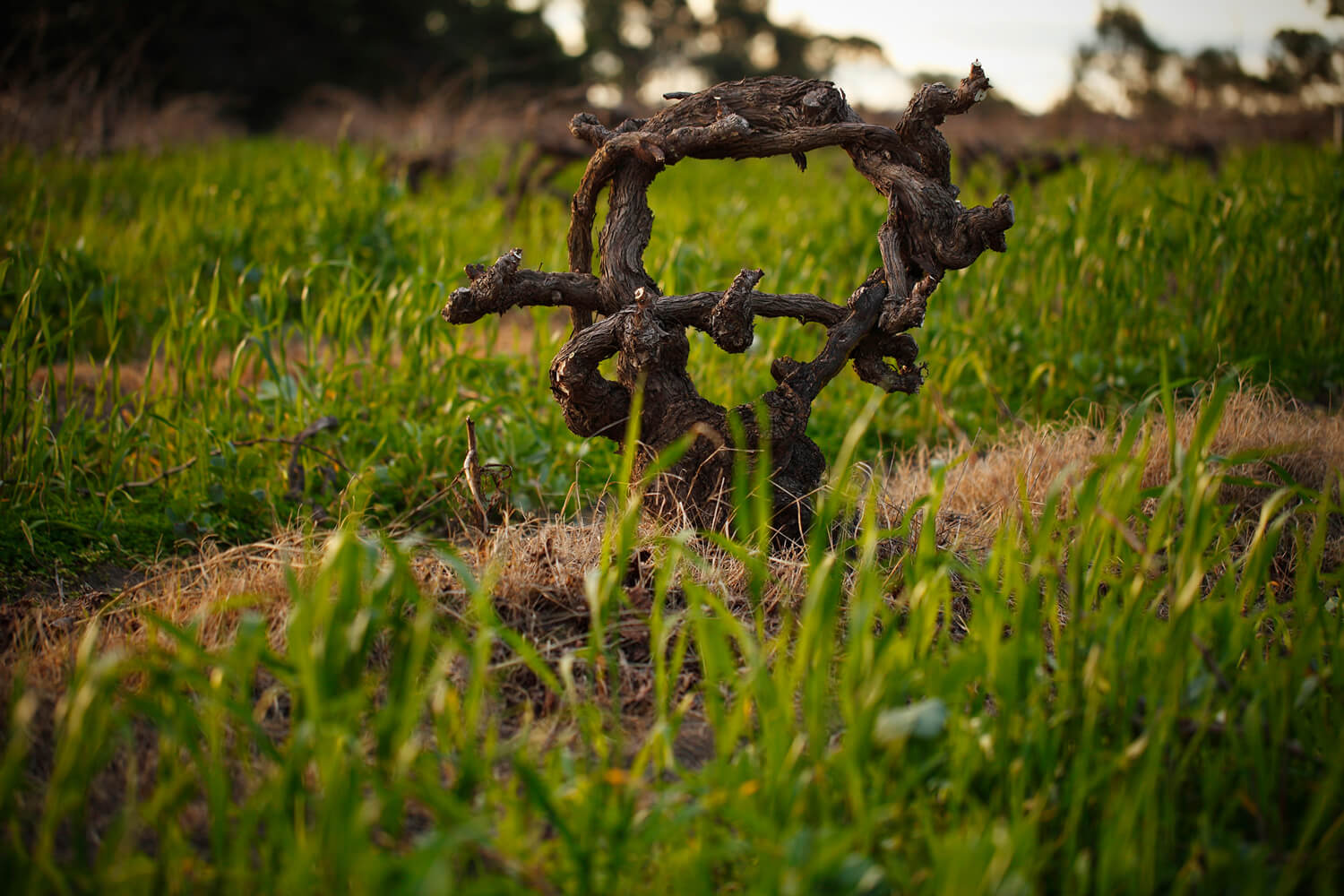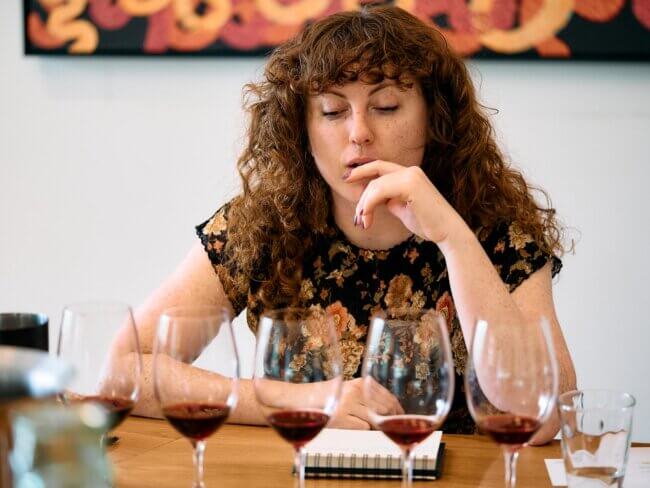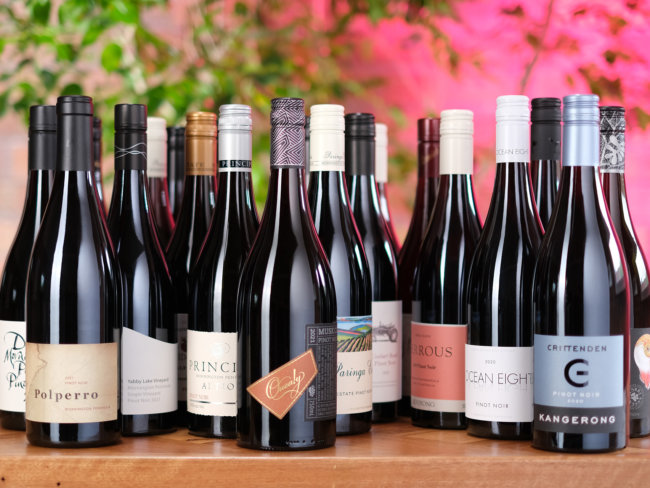The Barossa is arguably Australia’s most revered wine region. It dwarfs other fine wine regions for scale, while firmly maintaining a quality profile, with its distinctive style and character recognised worldwide. It is dripping in history, has far and away the largest resource of old and ancient vines in the country, and fifth- and sixth-generation growers and makers proliferate. It is fair to call it the cornerstone of Australian wine. It is the home of powerful red wines, established names making established styles, but there are also makers finding new meaning in the territory. The Barossa has been fertile ground for YGOW finalists, producing four top Young Gun title holders: Matt Gant (First Drop, 2007), Pete Schell (Spinifex, 2008), Abel Gibson (Ruggabellus, 2012) and Fraser McKinley (Sami-Odi, 2014). This year’s Top 50 includes Jonathan Ross (Micro Wines) and Steve Crawford (Frederick Stevenson).
The New Barossa is a term often bandied about. A statement of revolution. And in its declarative nature, one could think it a revolution both fought and won. But that assumption is misleading. The Barossa has largely stuck to its guns as much as it has ushered in change, and perhaps much more so. It also suggests that the new wave is of unified purpose. It isn’t, and that’s a very good thing, with makers finding their own way.
The Parker effect
The Barossa is both one of this country’s most cherished and most criticised wine regions. It is also one perhaps where the pendulum swing of style has seen extremes flourish. In the 90s, few regions were as consumed by the influence of wine critic Robert Parker as much as the Barossa was, and the wine show circuit tended to endorse these views.
The resource of old vine shiraz and the warm climate were the perfect foundations for making ‘Parker’ wines, pushed to maximum ripeness and wrapped in a lavish amount of oak. Those wines racked up high scores on his signature 100-point scale and made lots of people plenty of money in the process. Many of the wines ended up in the American market, and many of the labels are ones that even the most committed Barossa wine lover may not recognise, created to fulfil a purpose, made to a style, and for an export market. It was big business, though the GFC savaged it.
“I think cinsault needs to planted everywhere,” he laughs. “What it can do as a small addition to reds… it really pulls things back, and gives acid, making the wines a bit lighter and more fragrant.”
On the more familiar front, labels like Greenock Creek, Elderton, Torbreck, Charles Melton and Grant Burge amongst others forged identities for themselves that were lauded by Parker and cherished domestically. The trappings of very ripe fruit and slick applications of oak were not avoided by many makers, with Parker’s influence arguably a case of the tail wagging the dog. But to characterise the region solely by these wines would be a mistake, the spotlight was just firmly pointed in one direction.
Torbreck was an ambitious 90s start-up, fronted by Dave Powell, with a mission to connect Rhône sensibilities with Barossa power, and though the wines were perhaps always more of the latter than the former, they were not cookie cutter wines – like those many export-only brands. Torbreck rode the wave, but it didn’t get consumed by it, while players like Rockford continued in the traditional ways of the Barossa, unruffled by what was swirling around them.
Immune to trends
Robert O’Callaghan started Rockford in 1984, so in the scheme of things it’s a mere Barossa baby, but Rockford is arguably the region’s most ardent bastion of tradition. And we’re talking old traditions here. O’Callaghan’s mission was informed by a Barossa that was being lost, a Barossa that saw old vines pulled from the ground and traditional styles shelved. His approach was one of revival, while what became known as traditional Barossa was a modern invention ¬– ultra-ripe fruit, high alcohol and lashings of sweet American oak.
![]()
Working the 1890s Robinson Basket Press today at Rockford Wines.
The work at Rockford is overwhelmingly manual, with old slate fermenters, basket pressing and a predominance of old, large-format oak. Rockford’s flagship shiraz, the ‘Basket Press’, is a brooding and powerful wine, but it is no beast, with the alcohol clocking in around 14% in most years. It’s an approach that would sit comfortably with many of the so-called new wave. The ‘Rockford Academy’ has seen a legion of prominent winemaker’s pass through its low-slung stone winery, with makers like Chris Ringland, Dave Powell and Ben Chipman (Tomfoolery, 2014 People’s Choice) amongst the alumni, and that influence has been keenly felt.
Starting Spinifex tentatively in 2001 while still working at Turkey Flat, Pete Schell set the scene for a particular kind of revolution that was not so much about firing from the barricades, but rather quietly going about his business, unaffected by trends, inspired by what was around him, from underappreciated varieties to working solely with blends – anathema at a time when shiraz bottled solo was king (it still is). Schell set the scene for, and indeed actively fostered, makers to break with the notion of what the Barossa was and think about what it could be.
The new generation
Abel Gibson and James Erskine (Jauma, 2013 Winemaker’s Choice) and David Geyer (Geyer, 2018 finalist) all worked with Schell, with Gibson beginning his Ruggabellus project during lunchbreaks in the Spinifex carpark. Like O’Callaghan, Schell became mentor to some key players of that next generation of winemakers, providing a creative forum while not imprinting them with a style. While a more conspicuous power player, Torbreck also fostered its fair share of talent, including Sami-Odi’s Fraser McKinley, Dan Standish (Standish Wine Co.) and Craig Isbel (Izway Wines).
The Barossa was also a place where a generational shift was retooling existing growers and makers in new ways. Natural wine pioneer Tom Shobbrook converted his family’s Seppeltsfield vineyard to biodynamics. Troy Kalleske (People’s Choice 2007) did the same to his family’s historic holdings, while also bottling their first estate wines after nearly 150 years as growers. Marco Cirillo, custodian of what are thought to be the world’s oldest grenache vines (planted 1848), championed a style that was overwhelmingly earthy and savoury, paying homage to what the venerable vines gave, as well as winemaking traditions rooted both in the Barossa and back eight generations in the family’s ancestral home in Calabria. While outsiders made a splash, too, with makers like Alex Head (Head Wines, 2013 People’s Choice) working with a network of growers to make finer styles, utilising whole bunch ferments and minimal oak.
![]()
Cirillo Estate are the current custodians of these grenache vines planted in 1848, which are now over 170 years of age. Uniquely, these are basket pruned/trained – a method Marco Cirillo’s father Vincezo adopted from his home in Calabria.
Steve Crawford (Frederick Stevenson, 2015 Winemaker’s Choice), originally hails from the Riverland, but travelled to the Barossa with his parents often, who were connected to the wine scene there. After studying oenology and working overseas for several years, Crawford returned home for good.
“I found myself back working at Hewitson in 2011, which was a vintage that was very wet and cool. I got weirded out by people trying to make the same wine in a wet year,” Crawford says. “Many producers were saying that no-one should be bottling premium wine. In Europe they have that kind of rainfall on a regular basis, but they still produce something worthwhile. Then we had 2012, which I thought was a great, lovely, elegant cooler year, and it really made some terrific wines. But some people went back to making high-octane stuff with new oak.”
Beyond shiraz
Crawford saw a different way, like Schell before him, challenging the kingship of big shiraz. “I started to think about other varieties that could do well in the Barossa that could complement shiraz, or to move away from shiraz completely. And also focusing on grenache, but not making it like shiraz, making it the way grenache should be made.”
![]()
80+ year old grenache vines at Hongell vineyard, one of the fruit sources for Frederick Stevenson. Barossa Range and Kaiserstuhl Conservation Park in the Background.
Jonathan Ross comes to the Barossa via way of New York, being a celebrated sommelier and one of only 269 Master Sommeliers in the world, and though he currently makes one wine from the region – a crunchy and bright cinsault – he also has his sights firstly set on grenache.
“The most unique and singular marriage of soil, climate and grape in the new world, in my opinion, is grenache and the Barossa. It thrives on both white sandy soils and dense iron and mudstone, though my preference is for the more ethereal expression of the soils found in Vine Vale,” Ross says. “I desperately want to get my hands on grenache from a sandy vineyard with at least 70 years of age on it. Though, young vineyards from this area produce beautiful fruit too.”
![]()
Cinsault vines at Smallfry vineyard in Barossa’s Vine Vale. Photographed on the day the grapes were picked for Micro Wines.
But though Ross and Crawford may rate grenache highly, the Barossa has ten times the amount of land planted to shiraz. In fact, the shiraz in the Barossa occupies more than double the real estate of the entire Hunter Valley. Shiraz is a big deal. And the idea of what Barossa is, what’s is supposed to be is also a big deal. “I make a shiraz, and because it has Barossa Valley on the label, people have a preconception about it. Whereas, working with montepulciano from the Eden Valley, there’s no narrative behind it, so I can just go hell for leather,” says Crawford.
Unlike McLaren Vale, for example, the push to trial unfamiliar varieties has been less urgent. “It is happening, but slowly, slowly,” says Crawford. “I think montepulciano’s quite an interesting one. Nero d’avola’s sort of up and coming… white varieties for the Barossa… you’ll probably see bit more grenache blanc, clairette, the Portuguese variety arinto… it’s a pretty interesting variety; it’s got riesling-like characters but then it’s also got quite a bit of texture. I think cinsault needs to planted everywhere,” he laughs. “What it can do as a small addition to reds… it really pulls things back, and gives acid, making the wines a bit lighter and more fragrant. Carignan is another one, but you have to really manage the vines.”
![]()
Steve Crawford – aka Frederick Stevenson – harvests grapes into 500kg bins before towing them with his car into the winery.
Colouring outside the lines
Crawford reflects that going out on your own as a maker isn’t easy in the Barossa, especially if you’re challenging a perceived norm, but it is essential if you want to push yourself. “Winemaking graduates can get winemaking jobs, but you have to always make the wine with the mindset of the people you’re working for,” he says. “After a few years of working in a cellar like that, you start to get a bit experimental in your thoughts… and that’s how I started out. And I have a bunch of mates who did the same. There’s plenty of camaraderie between winemakers doing their own thing.”
Whatever the winemaking approach, Ross believes that the pendulum swing that took wine styles in disparate directions has reached a point where harmony is valued, whether in traditional or more avant-garde styles. “It’s about getting away from the extremes,” he says. “We don’t want overripe or under-ripe, we want ripe – perfectly ripe. We aren’t all focused on being as natural as possible, or the need to construct a wine to meet conventional criteria. We want wines that do right by the land that grows them, the people that make them, the business that sells them and the consumer that will ultimately find pleasure in them.”
Today the Barossa is home to the old-school, the ‘modern traditionalists’ and a new guard that are not driven by style, but rather an individual pursuit to make wine that appeals to their sensibilities.
“Today, I think more and more producers, vineyard managers, winemakers are working harder than ever to find their unique approach to making the best version of their wines that they can,” says Ross. “It’s taking a long time for us all to realise that there isn’t only one correct way to do something. This is the new wave, and I think it’s just beginning.”
The Wines
2018 Frederick Stevenson Montepulciano (Eden Valley)
At first this is quite brooding and savoury, and with air it remains pretty savoury, true to variety, but it also starts to unfurl red fruit flavours to complement the tarriness, black fruits and layers of dark spice. There’s a hot bitumen note, with bright red berries, anise, a bit of a wild cherry and sarsaparilla thing going on, bitter mountain herbs and sour plum. It’s expressive, yet tightly coiled, too, with compact and assertive tannins and vibrant acidity wrapping the fruit up neatly.
2018 Frederick Stevenson ‘Hongell Vineyard’ Grenache
Open and fragrant nose of red berries and brambles, red liquorice, wild raspberry, soused cherries – bright and pure but there’s a calm seriousness to it. It’s got some hard rock candy notes, but it’s not confected. There’s whole bunch there, but it’s well integrated into the wine, offering subtly lifted spice and a bit of extra grip. There’s slippery suppleness to the palate, with texture, detail and intensity but it’s on the elegant side for Barossa grenache, with grippy but fine tannins cinching everything in.
2019 Micro Wines Cinsault
Lifted and fragrant, with smudges of pristine red fruits, sour blueberries, violets, and grapey notes. You could call this pinot-like, but that would be doing it a disservice, explaining away its individuality. It’s more in that weight, but with a plump of expressive wild berry fruits and blue florals. There’s a lightly saline slip across the palate, with super-supple tannins, a bit of a white-wine-like texture and play across the palate, finishing with crunchy tannin and bright acidity; light to mid-weight, smashable, some may say.
See the full list of Top 50 winemakers in the 2020 Young Gun of Wine Awards here. Join in our virtual events here, and also vote on who wins the People’s Choice until June 1.












